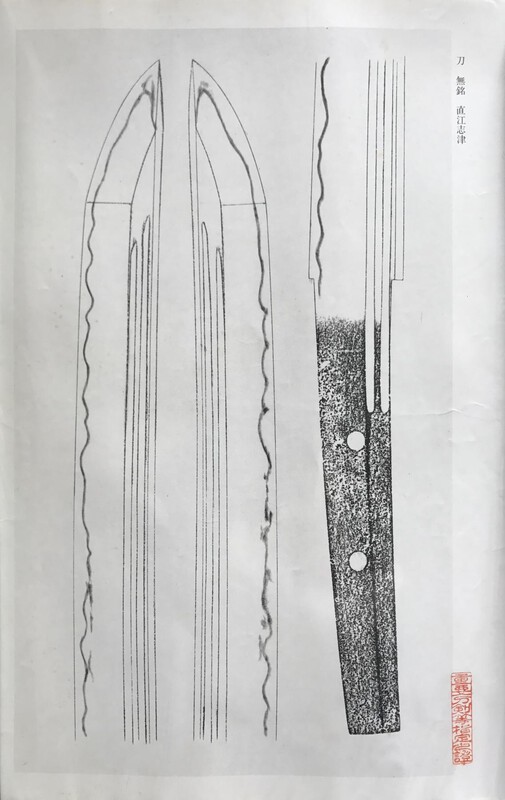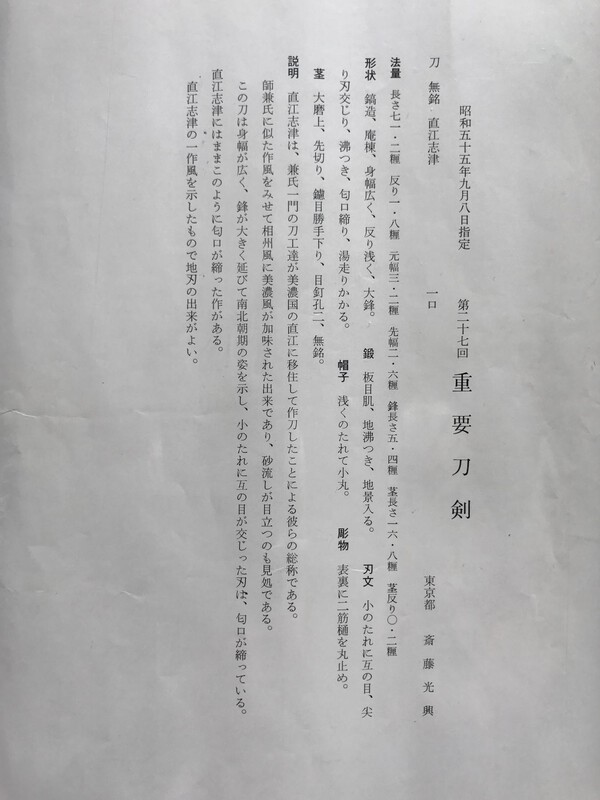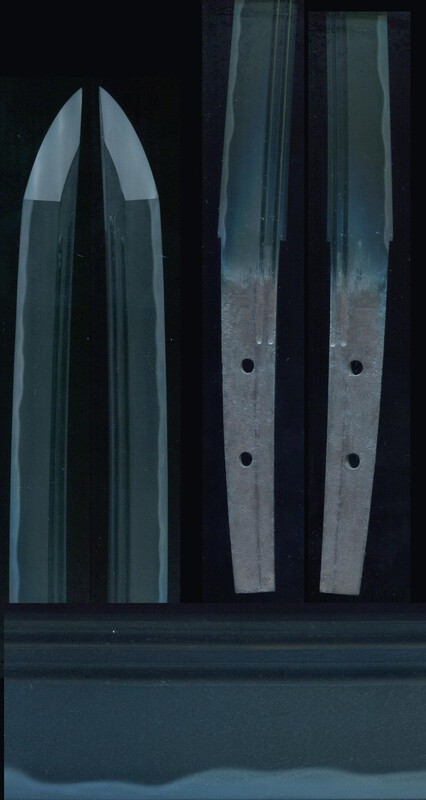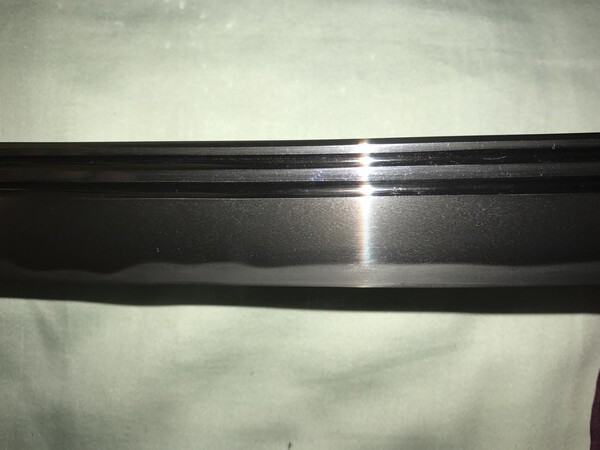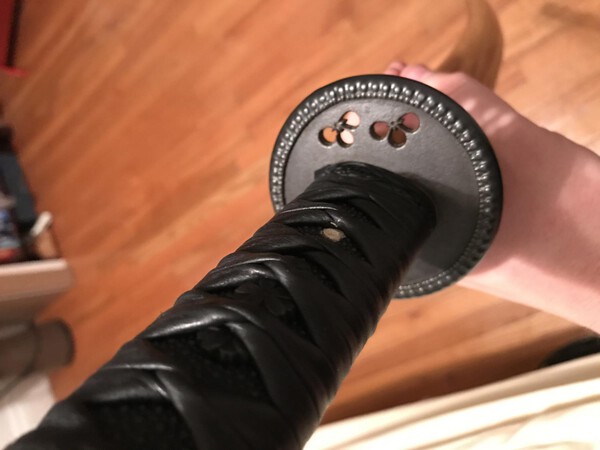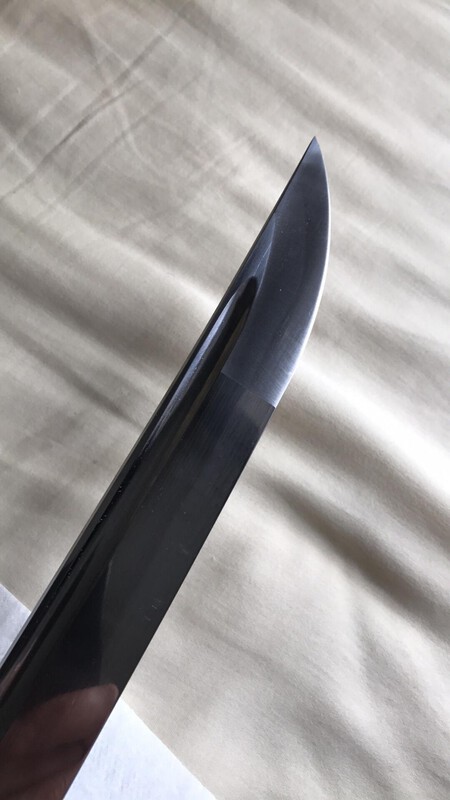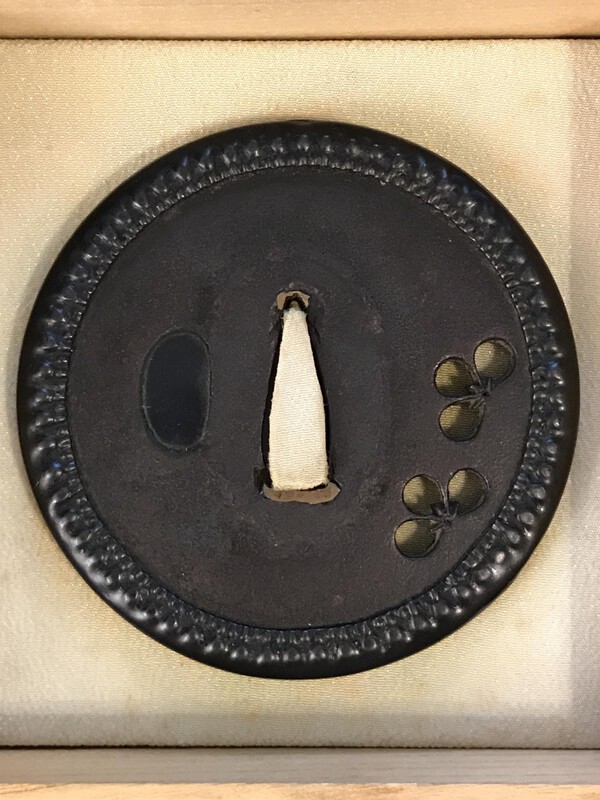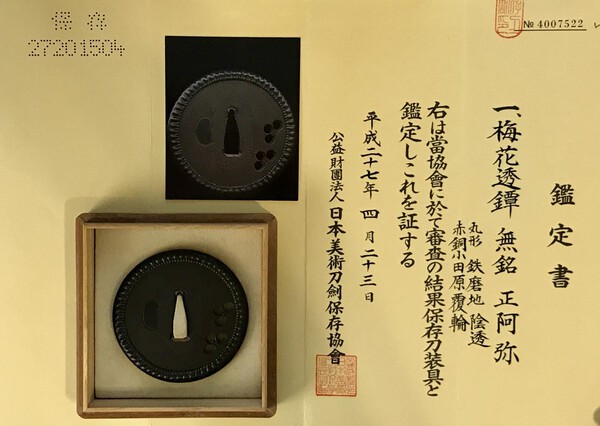-
Posts
761 -
Joined
-
Last visited
-
Days Won
5
Content Type
Profiles
Forums
Events
Store
Downloads
Gallery
Everything posted by Katsujinken
-
Darcy, your analysis is super interesting – thanks for jumping in! I had never considered Kinju, but in context it makes sense! The fun / beguiling aspect of these old Koto blades is that (as you have said many times) these attributions are guesses in a way and really more of a metaphorical measuring stick whereby quality is assigned based on relative positions we have assigned the smiths and schools. I've wondered if perhaps the "Naoe Shizu" is a lesser work of Kaneuji given its similarities to the Kaneuji from your site (http://www.nihonto.ca/shizu-3/), but Kinju is a whole new path to consider. Considering they're both part of the Masamune no Juttetsu, the blade only becomes more interesting now. The rabbit hole is deep indeed.
-
In any case I would ask for a guarantee that the green papers will upgrade to current NBTHK papers within 1 year of purchase. With the sayagaki you probably don't need to worry, but if you ever want to sell it I think current papers will help. Will leave price to others...
-
You know I have wondered this myself. I think it could part of the nod to Sadamune, but who really knows. Then again... http://www.nihonto.ca/shizu-3/
-
Okay my friends, the time has come. And I owe Ray a big high five because he totally nailed it: 直江志津 This katana went Juyo to Naoe Shizu in the 27th session (1980). Honma Junji wrote a sayagaki to the same effect a few years later. Measurements: nagasa 71.2 cm, sori 1.8 cm, motohaba 3.2 cm, sakihaba 2.6 cm, kissaki-nagasa 5.4 cm, nakago-nagasa 16.8 cm, nakago-sori 0.2 cm Shape: shinogi-zukuri, iori-mune, wide mihaba, shallow sori, ô-kissaki Kitae: itame with ji-nie and chikei Hamon: ko-notare in nie-deki that is mixed with gunome, togariba, and yubashiri, the nioiguchi is tight Bôshi: shallow notare with a ko-maru-kaeri Horimono: on both sides a futasuji-hi with a marudome Nakago: ô-suriage, kirijiri, katte-sagari yasurime, two mekugi-ana, mumei The setsumei says: Naoe-Shizu is a general term for Kaneuji’s students having settled in Naoe in Mino province. Their works display a workmanship similar to that of Kaneuji, which is the Sôshû tradition mixed with Mino features and one of their highlights are conspicuous sunagashi. This blade has a wide mihaba and a largely elongated kissaki what speaks for a shape of the Nanbokuchô period. It shows a notare that is mixed with gunome and that features a tight nioiguchi but there are some Naoe-Shizu works extant with such a tight nioiguchi. Thus we have here a blade with an excellent jiba that shows very well the characteristic workmanship of the Naoe-Shizu group. Others has speculated that the asai notare hamon plus the wide body, futasuji-hi, and o-kissaki indicate perhaps that the blade was ordered as an utsushimono of Soshu Sadamune. I always found it interesting that the utsuri is not mentioned in be papers, but perhaps relative to the other hataraki it was not distinctive enough as a kantei point. Anyway, thanks for participating. Hope folks found this worthwhile. I certainly found this thread edifying and look forward to any additional thoughts that may be shared.
-
Lloyd, I think you might be seeing the nijuba Ray mentioned + the effect of the hard camera flash. This blade has not been retempered as far as I know. Worth noting that it is suriage and there is no mizukage. Obviously this is not a Tokuju Soshu masterwork where saiha might be overlooked, so I don't think it gives away too much to say that it's Juyo – so saiha would be doubly surprising. Interesting responses so far! Looking forward to revealing the attribution later... :-)
-
One more clue. Will post the answer in 8 hours or so. Hopefully it generates an equally interesting thread. :-)
-
That's a great point. Thank you Jean!
-
To be fair, Aoi says jojosaku, but Fujishiro says chusaku (which is mostly where my 'pedestrian' comment comes from). In any case I appreciate the input! Thanks. :-)
-
What is it? This should be a fun one for a few reasons, so I'm very curious to see what folks come up with... First person to get it right gets a high five in San Francisco. :-)
-
I appreciate the concern, Ken, but rest assured I wouldn't be asking if using a live blade wasn't part of our training and completely appropriate. As for papered vs. not, I think Guido made the point: it doesn't much matter as long as one knows what's up with the blade itself. Hozon papers make no difference in this case. That's why this one jumped out at me: as far as nihonto go, it's a fine example but generally pedestrian – an everyday workhorse. Which means it's an excellent candidate for Iai. Hope that doesn't offend anyone. I don't think it's disrespectful to use a sword like this for Iai if you're ready for such a thing and know how to handle it properly. I was really just asking for a gut check based on the available photos, mostly.
-
https://www.aoijapan.com/katana-mumei-kanetsune The blade seems healthy enough. Obviously being o suriage, mumei, papered Hozon to a chu-saku smith, and late Muromachi at the oldest it should not be very expensive. I'm wondering what you all think of the auction starting price in the context of the above and as a potential blade for Iai.
-
With regard to the CURRENTLY used NBTHK Hozon and TH papers (not the old, generally disavowed ones), does anyone know when they switched from oshigata to photos for the nakago? Thanks! :-)
-
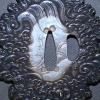
Sword And Weaponry Collectors
Katsujinken replied to cateburz's topic in General Nihonto Related Discussion
I was actually thinking that reaching out the NY Club itself might be the best option for Cate. Cate, send them an email: http://www.ny-tokenkai.org/ny-tokenkai.org/New_York_Token_Kai.html -
$2000 is not bad at all for a traditionally made shinsakuto. Don't let the weight throw you. Lots of production shinken are insanely heavy. That's not to say there aren't also heavy shinsakuto, but if they are heavy the balance is usually much, much better.
-
Right, I definitely do not think there is any malice or purposeful misrepresentation on Aoi's part. And while I can understand translation issues related to the vagaries and idiosyncrasies of kantei, the titles of the papers should be correct because there are only four possibilities for foreign buyers. That is a mistake that should never happen and is avoidable 100% of the time. Aoi either cares enough to prevent it or they don't. We're talking about tens of thousands of dollars, after all.
-
I'm sorry, but there is no excuse for messing up the papers like this. It's not a translation issue. The paper titles are transliterated and never change. A teenager could ensure this kind of thing never happens. Yes, final responsibility rests with the buyer (and fortunately we have great resources like the NMB), but at what point will people decide enough is enough with Aoi?
-
With a bit of seppa swapping I was able to mount this on a modern shinken. Fits like a glove! The shinken is a custom katana made by MAS. It's made with Japanese L6 steel. Their forge is in Korea, I believe. The properties of L6 result in a fairly minimal hamon, and as with most modern blades not made with traditional materials the yokote is cosmetic. I'm very happy with how it turned out. It feels good in the hand, but I'll know for sure on Tuesday after a bit of tameshigiri.
-
Thanks! I don't think I would've bought it from afar without the papers given the idiosyncrasies you both highlighted, but I'm very happy with it. Looking forward to mounting it soon!
-
Just picked this up for an excellent price (a steal, really, given the cost of papers). Really happy with it, and planning to mount it on a modern shinken for use in training. It's papered to Shoami, so the shakudo odawara fukurin is distinctive. I love plum blossoms (the ryokan Shiraume in Kyoto is a special place for me), so this one just immediately jumped out and called to me.
-
Well, everyone has their favorites. I don't want to offend anyone through omission. But it's safe to say that individual dealers mentioned by name on NMB with a good reputation are a good place to start. A bit of searching reveals the core group pretty quickly. But even with the pros, responsibility begins and ends with the buyer. In most cases, you are going to pay at least a little premium for their expertise and handling. How much you're comfortable with is up to you. :-) But this is just what works for me.
-
Aoi is a nice resource in the modern age but I'll never buy from them. I'd rather bide my time and spend a bit more with a very small number of dealers I trust and with whom I have built a real relationship. Aoi is like the Wal Mart of nihonto. And there's nothing wrong with that as long your eyes are wide open with regard to what you're buying. You can't walk into a Wal Mart and buy Versace, after all.
-
Darcy has written about this extensively, so I look forward to him chiming in. But I will add that the older a sword is, the higher it can paper when mumei. Darcy has stats, I am sure. Important to remember that once you're into koto, the attribution on a mumei blade is as much a metaphorical statement of relative quality based on our judgment of the smith/school as it is a declarative statement of what person forged it X00 years ago. E.g. Imagine an attribution of Kaneuji vs. Yamato Shizu, etc. In the past there are attributions on well known top quality blades that have changed. Again, Darcy has loads of data and anecdotes around this exact issue.
-

Digital Copies Of 1620 Ono Oshigata Scrolls Available
Katsujinken replied to Randy McCall's topic in Nihonto
Me too, thanks!



